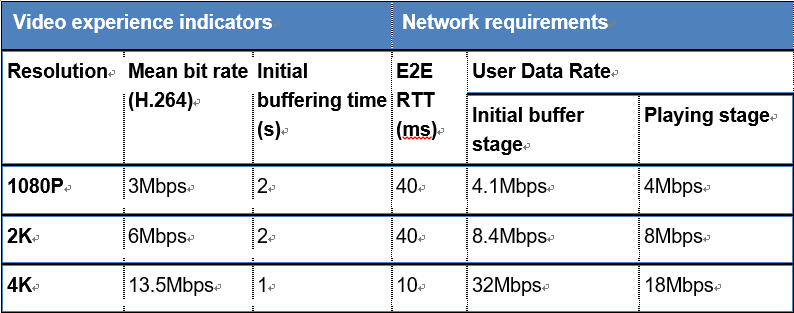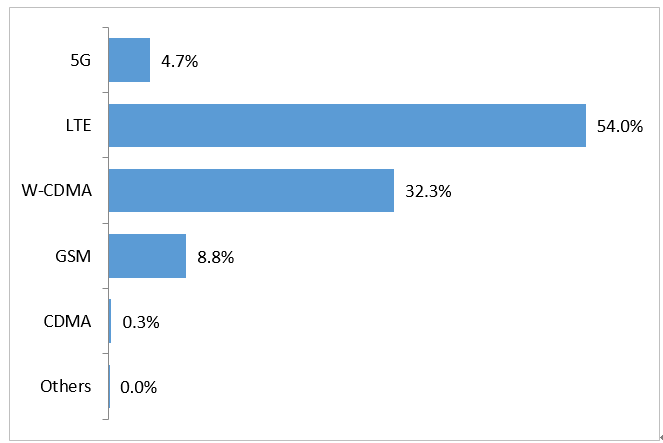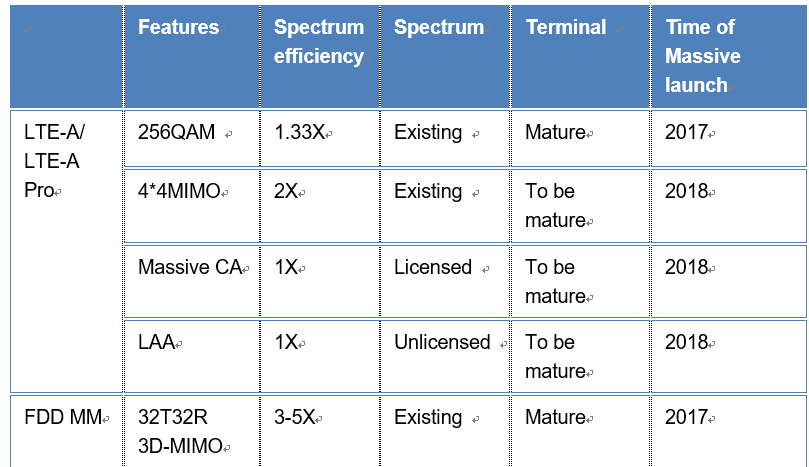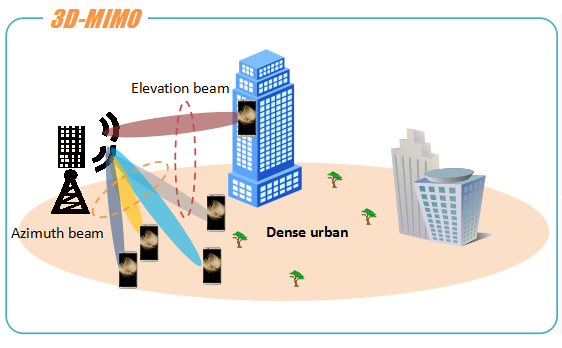FDD Massive MIMO Leading 4G Innovation
With the development of technology, a lot of services can be applied in smart phones, which brings us more colorful life. Especially, several 5G original services such as eMBB, which would require huge network capacity. High quality video (big video) will be realized soon, the exploration of mobile broadband access capacity significantly stimulates the demand for mobile Internet and boosts the growth in mobile data services, which in turn increases the demand for mobile network capacity. The requirement for through puts by big video is shown in the following table:

The eMBB service is one of the 5G requirements and the standardization of 5G NR is accelerating, but its scale deployment depends on the mature industry chain including terminal, spectrum, and business mode. The 4G will still be the main network for a long time. Technology market share in 2022 is predicted by World Cellular Information Service (WCIS):

The capacity gain of LTE-A/LTE-A Pro is quite limited, and the requirement on UEs is high. Massive MIMO is a massive antenna array based the technology that utilizes beam forming, beam tracking and SDMA or MU-MIMO to enable multiple users to use same time and frequency resources simultaneously and suppress the resulting interference. Massive MIMO is one of the 5G technology candidates that have been introduced to LTE as it is proven that the technology can effectively multiply spectral efficiency while minimizing cost per bit. An interesting unique advantage of Massive MIMO compared to other spectrum efficiency improvement technique such as 4x4 MIMO and 256QAM is that the technology does not require the latest handsets in the network to be able to effectively increase system capacity.

The Massive-antenna technology enables 4G to retain its continuous evolution. Massive antennas enable 4G networks to satisfy growing network demand. From the operator’s perspective and requirement, this technology is envisioned and required to enable 5G hardware to be ready in advance, and provide 5G air interface functions through software upgrades, facilitating 5G deployment.
As a massive-antenna technology in the 4G era, Massive MIMO has been widely regarded as an ever-energizing technology since 4G roll out. This revolutionary technology is a great prelude to the future-oriented network. The core technology of Massive MIMO is 3D MIMO, which allows flexible beam forming in both azimuth and elevation domain.

● By adopting massive antenna arrays, Massive MIMO brings about a three to five fold increase in the spectrum efficiency when compared with traditional macro sites. This significant gain promises to motivate operators to totally overturn their network building strategies.
● Massive MIMO increases the flexibility of network coverage and operators can adapt the horizontal and vertical coverage scopes of Massive MIMO to coverage scenarios.
● With its astonishingly high capacity gain, Massive MIMO is expected to help operators adopt increasingly flexible charging polices to attract users, provide unimagined user experience and stimulate user data consumption, and increase operators' revenue.
ZTE makes technique breakthroughs to help FDD Massive MIMO commercialization. Normally, the Massive MIMO technology uses UE’s uplink signals to evaluate the downlink channels for beam forming. For the TDD-LTE network whose uplink and downlink adopt the same band, channel estimation is easier than the FDD-LTE network whose uplink and downlink use different bands. In FDD mode, figuring out the FDD channels reciprocity has always been one of the core challenges in the industry. The R&D center achieves the FDD macro symmetry based on FDD’s Massive MIMO channel measurement and estimation patented algorithm, fulfilling multi-user’s space multiplexing with no more cooperation of UEs and enhancing the spectrum efficiency. Concerning the hardware, the powerful processing capability of ZTE’s self-developed vector processing chips and their continuous upgrade have given strong support to achieve more effective algorithm. Finally, breakthroughs in algorithms and hardware upgrade accomplish the successful deployment of Massive MIMO in FDD-LTE networks.
Telkomsel and ZTE have successfully conducted the first LTE FDD Massive MIMO field trial in Indonesia. Trials are conducted using commercial TM9 handsets and mifi units that have been available for a while in the market to prove that this technology can still effectively increase the capacity of LTE system while using common devices. Initial test results by simultaneously using 4 handsets/mifi and 20 MHz bandwidth showed a total cell throughput of 468 Mbps.
Europe first FDD Massive MIMO demo show will be in Belgium Telnet wireless user conference, with 4 UEs and cells of up to 450Mbps+@20MHz.
3D MIMO is also realized and there is a trial in Fujian with China Unicom. ZTE used 20 MHz spectrum, and six 2R terminals to complete 12-streams verification. The single-user average rate is about 120 Mbps, the cell peak rate is as high as 710 Mbps+, and the spectrum efficiency is 4.8 times higher than traditional macro BSs.
ZTE focuses on FDD Massive MIMO commercial application by enlarging the trial scale to 10 to 20 sites and adding more different scenarios for further verification. There are more than 8 pre-commercial tests worldwide. ZTE will continue to optimize FDD Massive MIMO, which is the most proper 5G technology applicable to 4G and follows the 3GPP standardization of Massive MIMO technology, leading the way of 4G to 5G and provide quality services.


